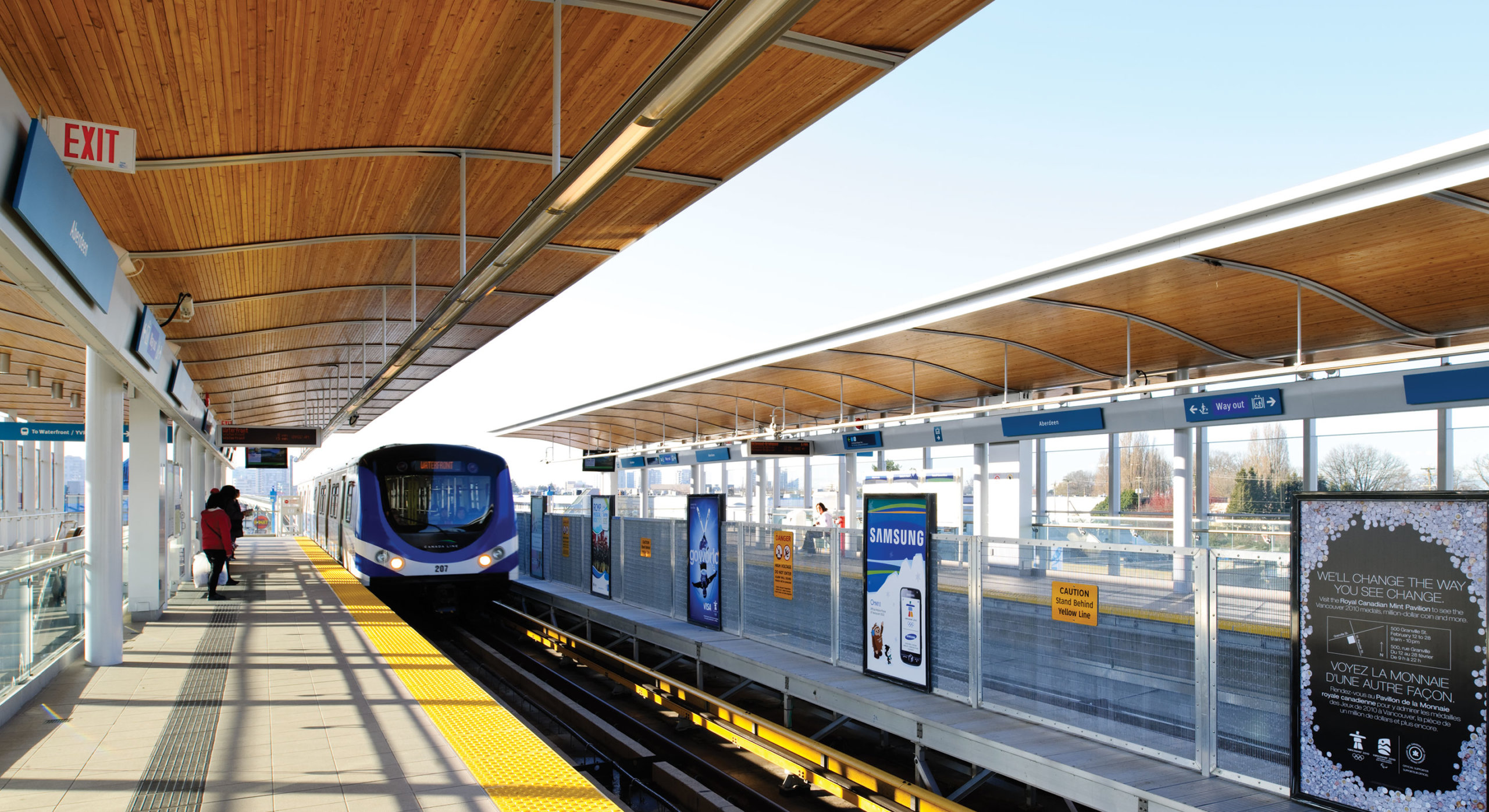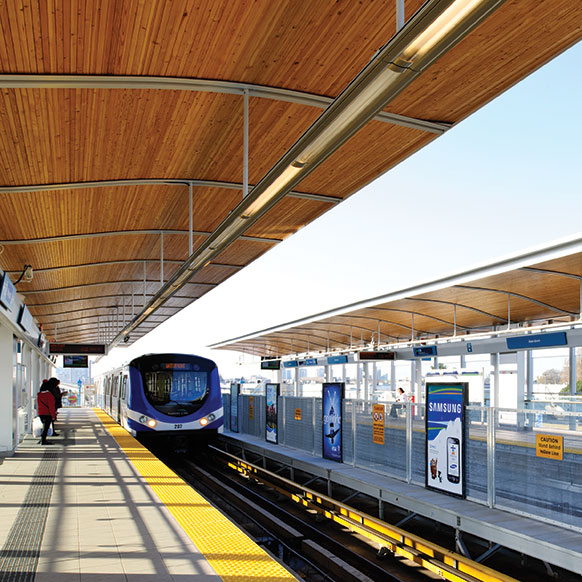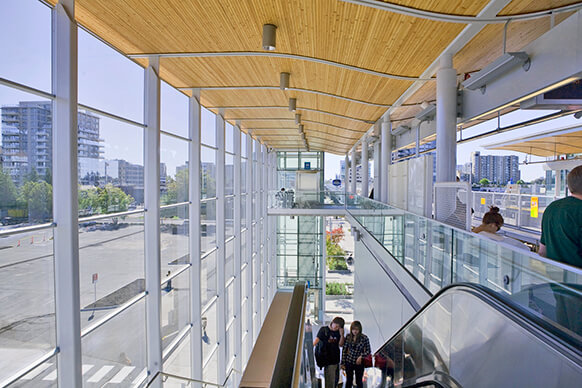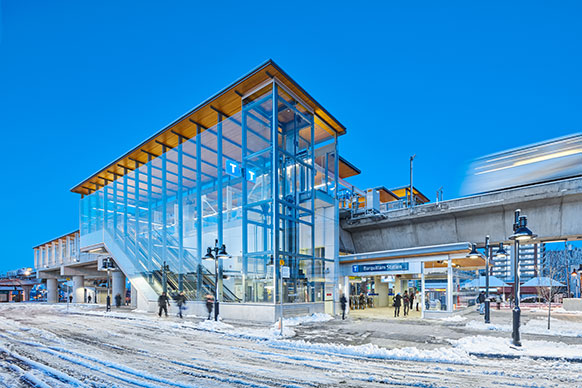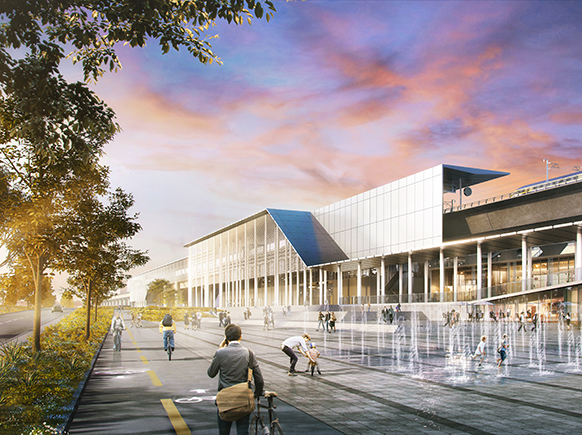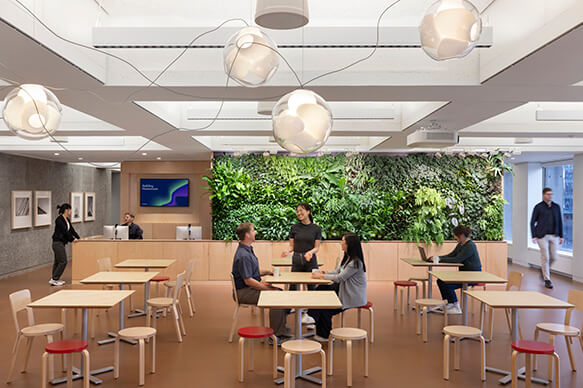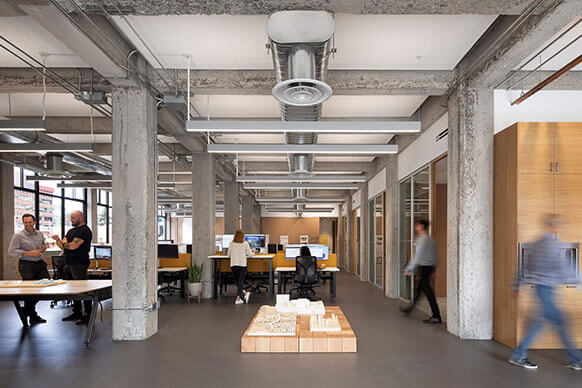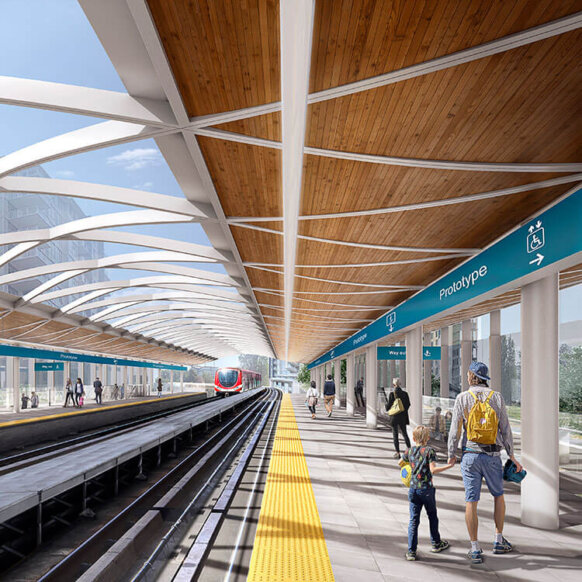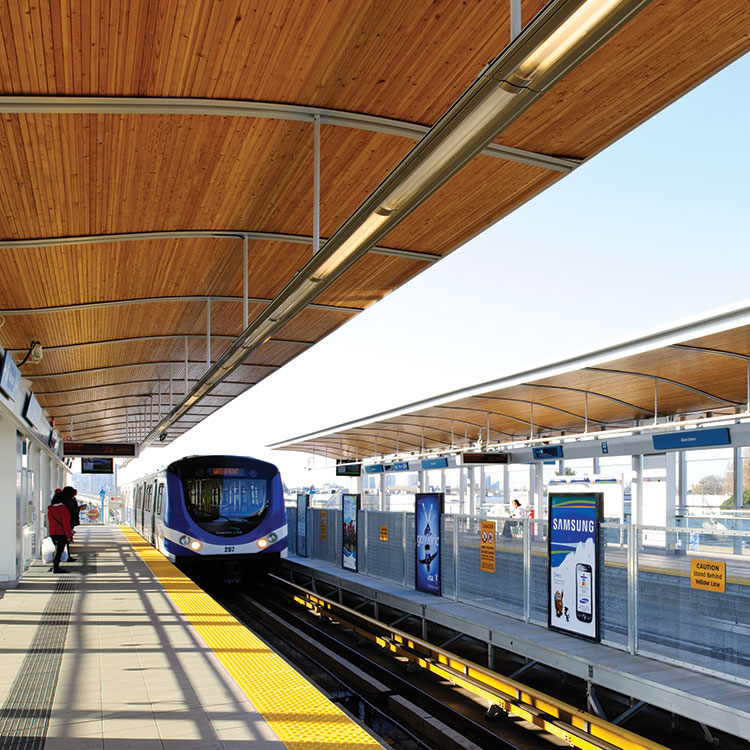
Canada Line Stations
A legacy of the Vancouver 2010 Olympics, the Canada Line project helped welcome the world. As part of the consortium team led by SNC-Lavalin, we designed three stations along the Richmond segment of the new line: Aberdeen Station, Lansdowne Station, and Richmond-Brighouse Station. In addition to the typical challenges for an infrastructure project of this size, the team was tasked to deliver the project in advance of the start of the Olympic Games. Our solution—modular roof panels with integrated services—allowed for off-site fabrication, reducing costs, improving quality, and saving time. Not only could the roof panels be manufactured ahead of time, but the station roofs could be installed quickly, contributing to the line opening three-and-a-half months early.
Designed as a family, we used common elements to help identify each station as part of the Canada Line’s Richmond segment, while giving each station its own unique look and character.
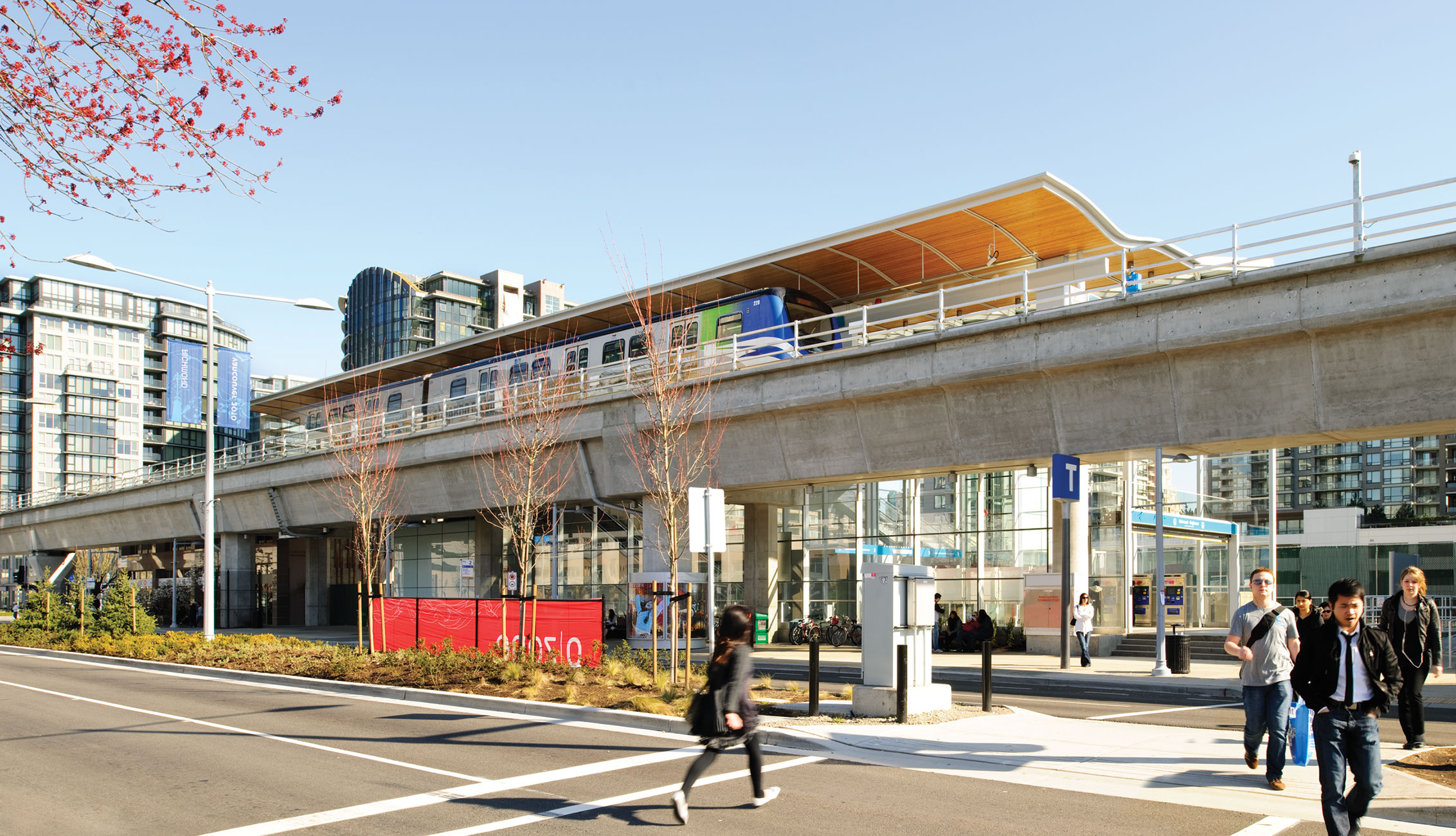
With more than 100,000 passengers travelling the line per day, each station was conceived of as a catalyst for future development and was designed to complement its envisioned surroundings. Aberdeen supports mixed-use commercial development, Richmond-Brighouse serves as a large-scale urban project, and Lansdowne is surrounded by a large-scale park and plaza. Strategic daylighting ensures that future development does not reduce the level of daylight brought into the stations, and rooftop rainwater collection is incorporated into landscape design features.
The stations are fully glazed to encourage openness and visibility, adding a layer of security as there is always a line-of-sight connection when in the stations. Platforms are accessible primarily via stairs and escalators at the perimeter, with transparent elevators providing wheelchair access. On the platforms, the extensive use of glass creates a visual connection with the surrounding area.
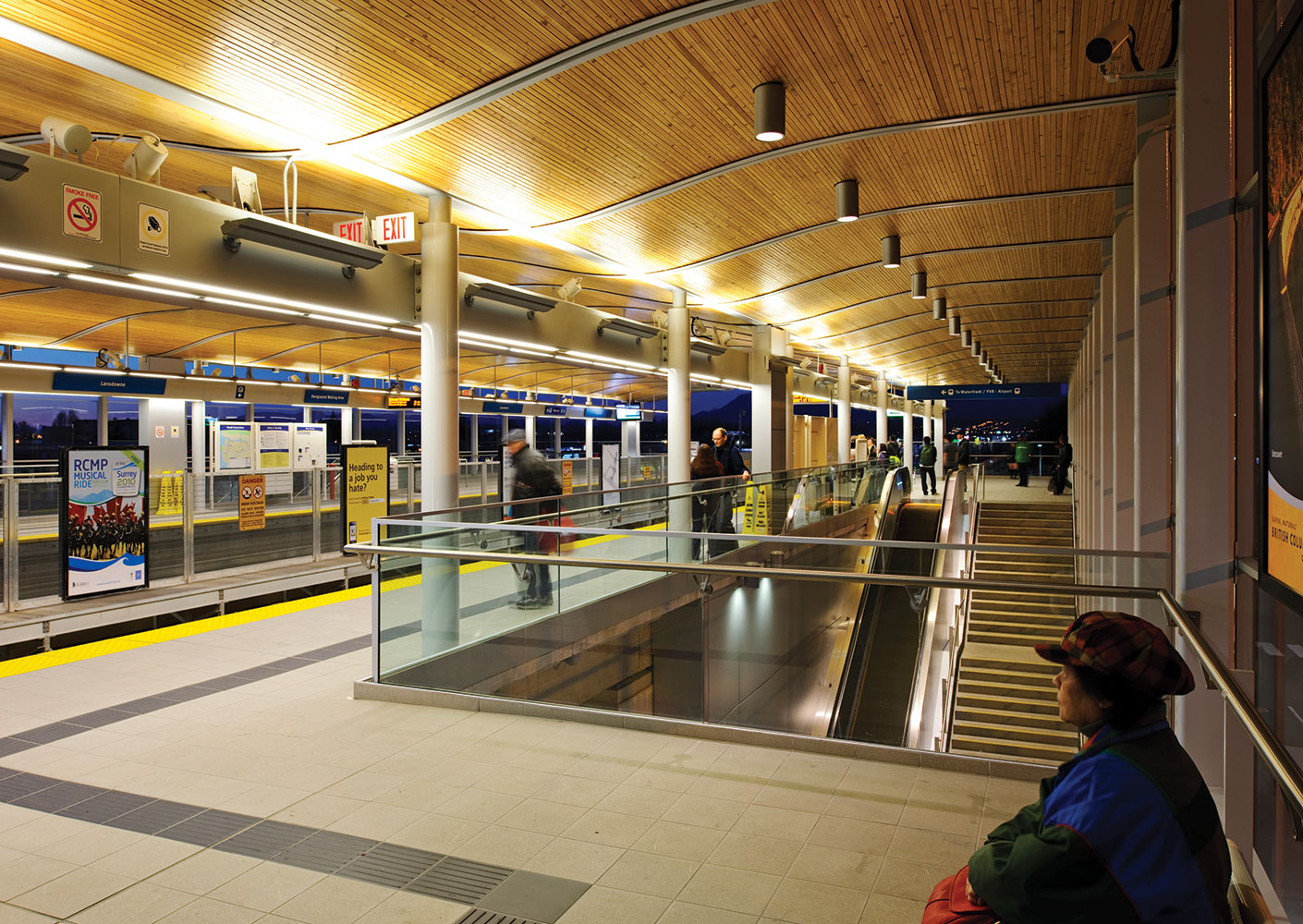
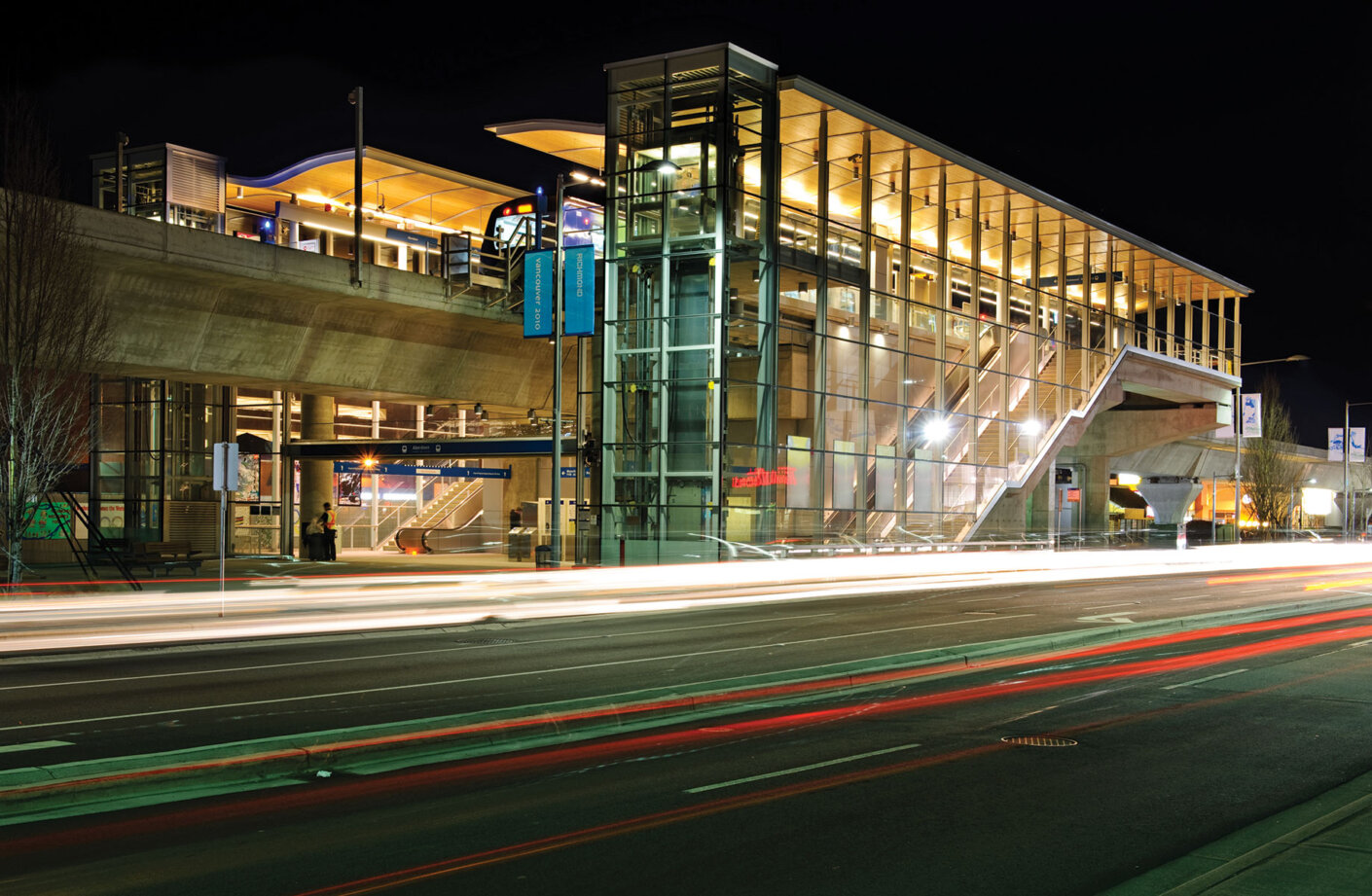
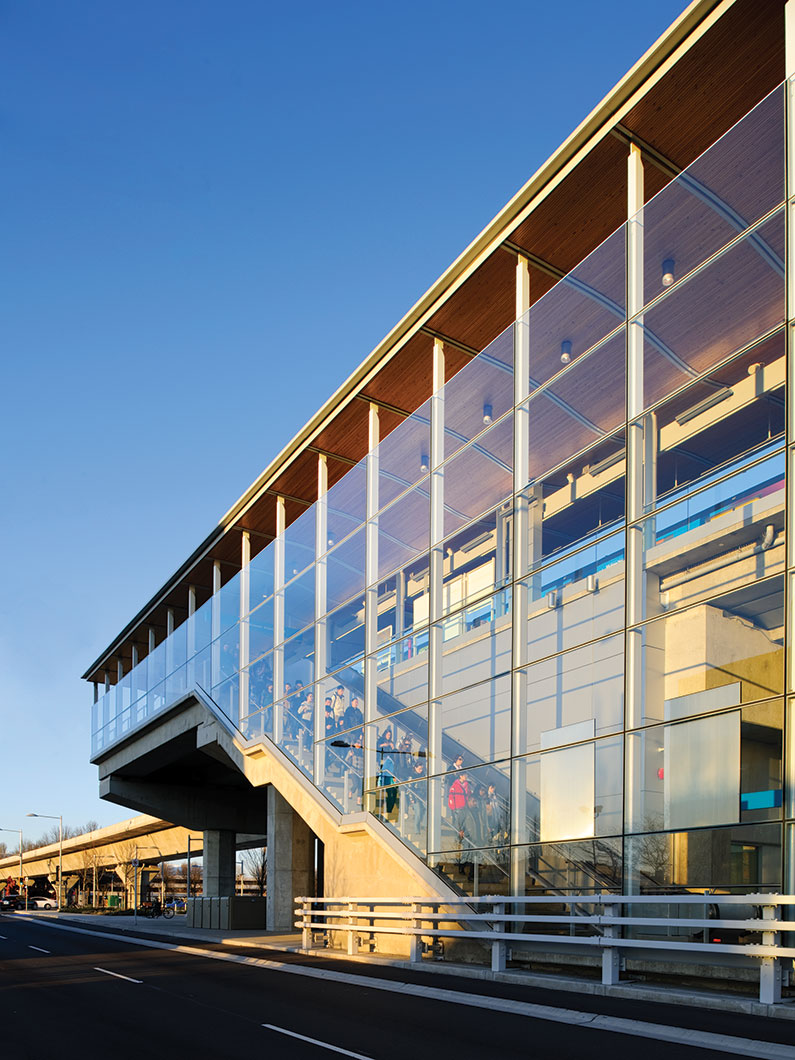
A signature design feature of all our transit stations, wood adds an element of warmth and comfort. The fir wood modular roof panels—made up of 38 x 89 mm (2 x 4 in) dimensional lumber solidly packed together on edge—are thin enough to achieve a curvilinear form, suggesting a wave form to emulate movement and the flow of travel. When combined, these distinctive roof panels give the appearance of a wingspan, providing weather protection for the length of the platform and clearly identifying the stations as part of the Canada Line’s Richmond segment.
